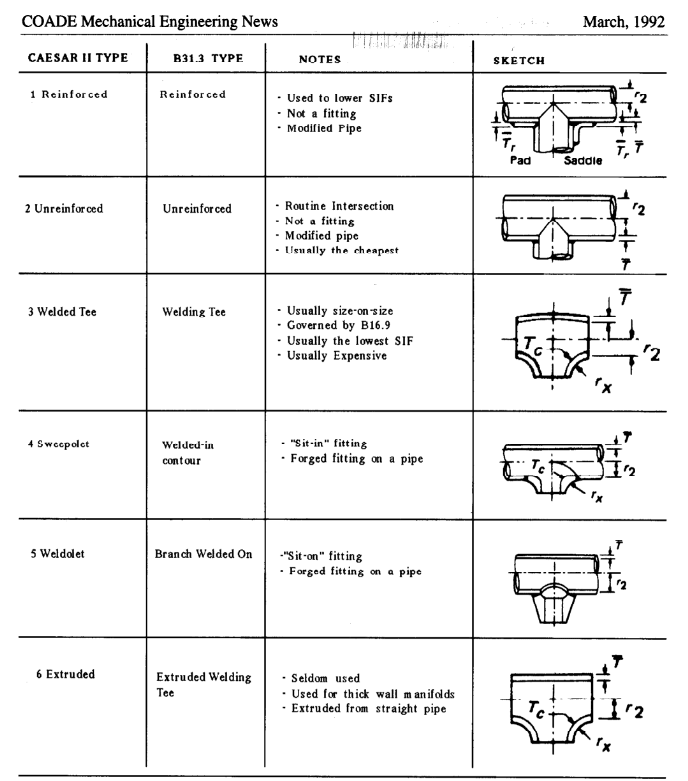nux
Mechanical
- May 3, 2024
- 6
Hello everyone, my question is about user defined Weldolet SIF on CaesarII. My header size is 28" STD and branch size is 12" S40. When i let the caesar calculate sif values and run the analysis i dont have any issue on stress ratios. But when i enter the same sif values manually(User SIF) which calculated by caesar i get problem with stress ratios and bending moment value increases a lot. Let me explain how i enter sif values manually.
Below screenshot from the analysis which i let Caesar calculates the SIF values automatically. As you can see Caesar creates node on surface which is 8684. Second screenshot shows stress and sif values from analysis which i enter sif values manually. My user SIF values same with Caesar calculated values but there is huge difference stress ratios and as you can see bending moment value increased.
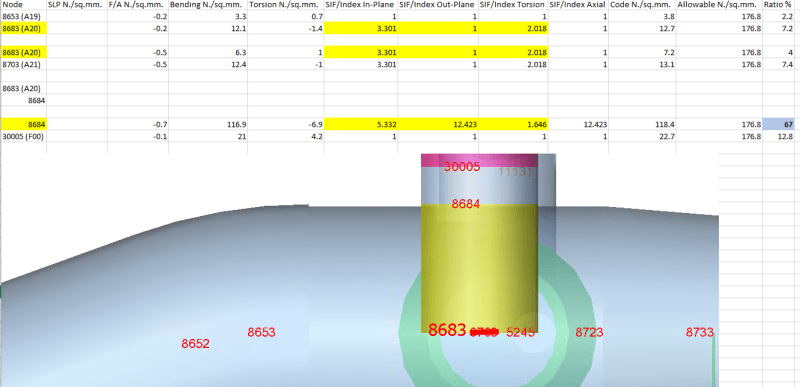

When i enter SIF manually i broke node at surface which is same node number with Caesar creates and i entered same values which are 5.332, 12.423, 1.646. 3rd and 4th screenshot shows USER SIF that i defined and 5th screenshot shows SIF settings which i let the Caesar calculate.
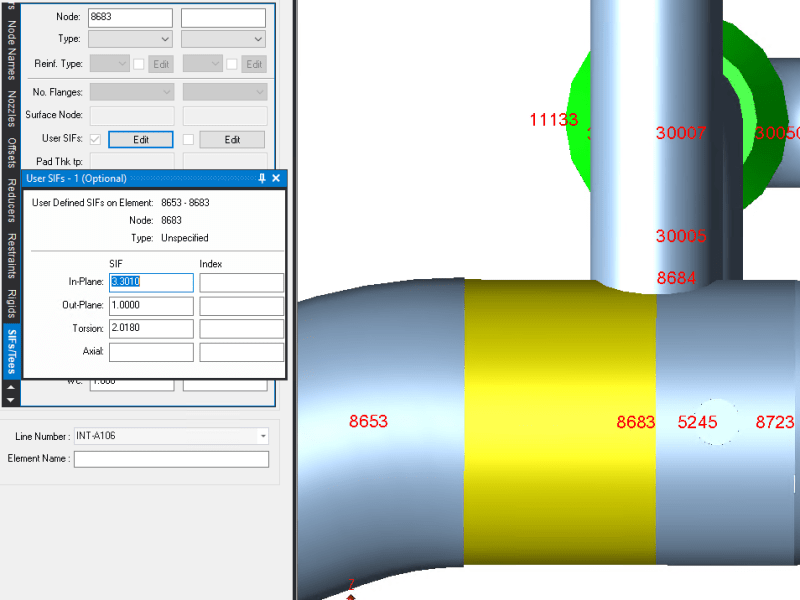
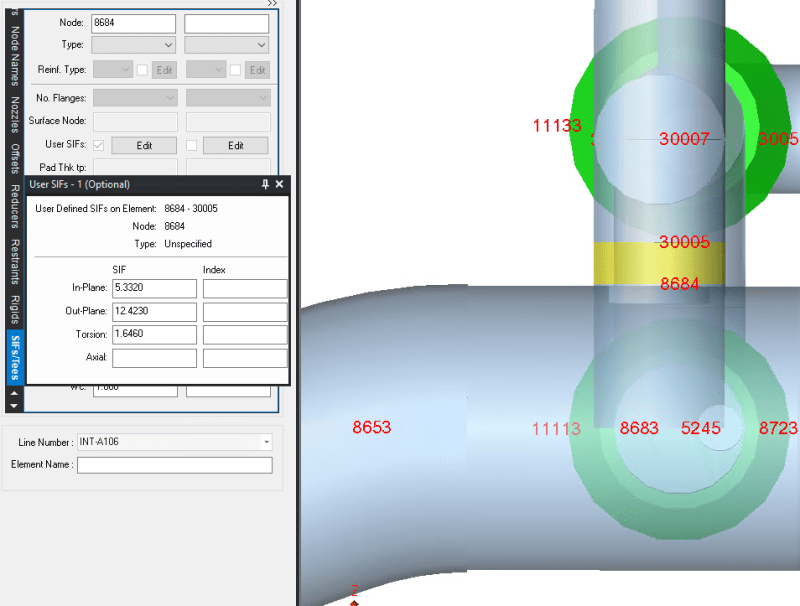
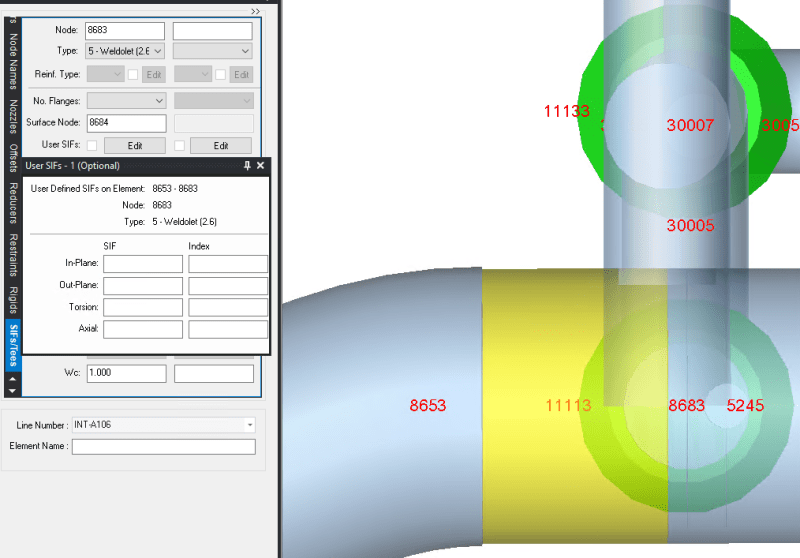
When i consider these i believe that i make a mistake with branch connection modelling.
So my question is how should i model this branch connection so i can get same stress results?
Thanx in advance,
Best Regards.
Below screenshot from the analysis which i let Caesar calculates the SIF values automatically. As you can see Caesar creates node on surface which is 8684. Second screenshot shows stress and sif values from analysis which i enter sif values manually. My user SIF values same with Caesar calculated values but there is huge difference stress ratios and as you can see bending moment value increased.


When i enter SIF manually i broke node at surface which is same node number with Caesar creates and i entered same values which are 5.332, 12.423, 1.646. 3rd and 4th screenshot shows USER SIF that i defined and 5th screenshot shows SIF settings which i let the Caesar calculate.



When i consider these i believe that i make a mistake with branch connection modelling.
So my question is how should i model this branch connection so i can get same stress results?
Thanx in advance,
Best Regards.

